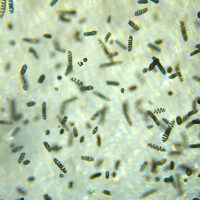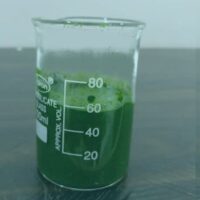Last updated on July 3rd, 2023
Clinical studies on thousands of diabetes patients around the world have shown a number of benefits that make Spirulina a safe nutritional supplement for daily intake by diabetes patients. Many conventional Doctors already acknowledge the powerful effects of spirulina for diabetes and recommend it to their patients as a means to improve their well being, and even beat this condition to a certain extent. So, without further due, here are a few of the most notable benefits of spirulina for diabetes patients.
Spirulina lowers blood sugar levels naturally
A long-term study carried out over 30 years ago among 1297 patients with type 1 Diabetes produced immense improvement over just one year. It proved to balance blood sugar levels and prevented the side effects of the disease.
Spirulina strengthens the effect of insulin
A study, published in 2013, examined the anti-diabetic effect of spirulina on diabetes patients. Researchers used extracts of Phycocyanin from spirulina, the antioxidant that gives spirulina its strong blue color.
The study led researchers to the conclusion that Phycocyanin found in spirulina stimulates the body’s insulin function, improves the peripheral tissue’s insulin resistance, and regulates the glock-lipid metabolism of the patient. It is thus endowed with a broad therapeutic potential for type 2 diabetes.
Spirulina prevents and improves neuropathic conditions
Another study, published in 2015, led researchers to declare that Spirulina as a dietary supplement is particularly effective in treating neurological degeneration-including the treatment and prevention of neurological damage leading to diabetic nephropathy (and or other degenerative diseases like Parkinson disease). The stinging sensation, numbness, paralysis and functional impairment of limbs, were all favorably affected when the intake of spirulina balanced sugar levels in the body.
The study concluded that the effect of Phycocyanin in Spirulina also leads to a significant improvement in the treatment and prevention of diabetic neuropathy.
Spirulina lowers liver fat
Fatty liver is one of the most common liver disease in the West. Its side effects almost inevitably lead to diabetes, particularly in obese patients. Spirulina consumption helps the body’s ability to overcome a tendency to oxidize fat, and strengthens the body’s sensitivity to insulin, achieving a state of balance.
The latest study, published in January 2016, shows how Spirulina caused an improvement in insulin resistance-diabetes, and led to a complete reversal of the diabetic condition in which lipids of the liver, kidneys and heart cells oxidize resulting in injuries. Spirulina antioxidants are so powerful, they can prevent lipid oxidation.
Spirulina assists in healing wounds and ulcers and restores blood vessels
Another study examined the effects of Spirulina on healing wounds, a common problem in diabetics TYPE 1. Researchers saw an outstanding therapeutic potential, and encouraged pursuing intake of spirulina and further research to maximize the potential of blue-green algae on diabetics.
A Few Things to Bear in Mind
You should also beware that this article does not recommend interrupting your prescribed medical treatment and taking spirulina instead. If you’re trying spirulina for the first time, start from 1 gr per day, and add another gram everyday until you reach the daily amount recommended by your medical advisor. Read about the powerful nutrients you can get from 1 tablespoon of spirulina per day.
Diabetes patients should be extra careful with the quality of their Spirulina. We recommend to always check your sources and only go for high quality Spirulina.
Further documentation on the benefits of spirulina for Diabetic Patients
| Non-randomized Pre-Post Study | Nakaya et al. in the first human study, gave 4.2 g day−1 of Spirulina to 15 male volunteers and, although there was no significant increase in high-density lipoprotein (HDL) levels, they observed a significant reduction of low-density lipoprotein (LDL) cholesterol after 8 weeks of treatment. The atherogenic effect also declined significantly in the above group. | Nakaya N, Homa Y, Goto Y. Cholesterol lowering effect of Spirulina. Atherosclerosis. 1988;37:1329–1337. |
| Non-randomized Pre-Post Study | Ramamoorthy administered Spirulina supplements in ischemic heart disease patients and found a significant reduction in blood cholesterol, triglycerides and LDL cholesterol and an increase in HDL cholesterol. | Ramamoorthy A, Premakumari S. Effect of supplementation of Spirulina on hypercholesterolemic patients. Journal of Food Science and Technology.1996;33(2):124–128. |
| Non-randomized Pre-Post Study | Mani et al. in a clinical study, found a significant reduction in LDL:HDL ratio and glycated proteins in 15 diabetic patients who were given Spirulina. | Mani UV, Desai S, Iyer U. Studies on the long-term effect of Spirulina supplementation on serum lipid profile and glycated proteins in NIDDM patients. Journal of Nutraceuticals, Functional and Medical Foods. 2000;2(3):25–32. |
| Double Blind Cross-over Study | 2.8 g of Spirulina thwice a day over a period of 4 weeks showed a small but statistically significant reduction of body weight in obese outpatients. | Becker EW, Jakober B, Luft D, and et al. Clinical and biochemical evaluations of the alga spirulina with regard to its application in the treatment of obesity. A double-blind cross-over study. Nutr Report Internat 1986;33:565-574. |
To Conclude
These studies are a drop in the ocean, providing but a small example of Spirulina’s ability to produce therapeutic healing on the side effects of diabetes. Thus Spirulina can contribute directly to the quality of life and health of diabetic patients.




